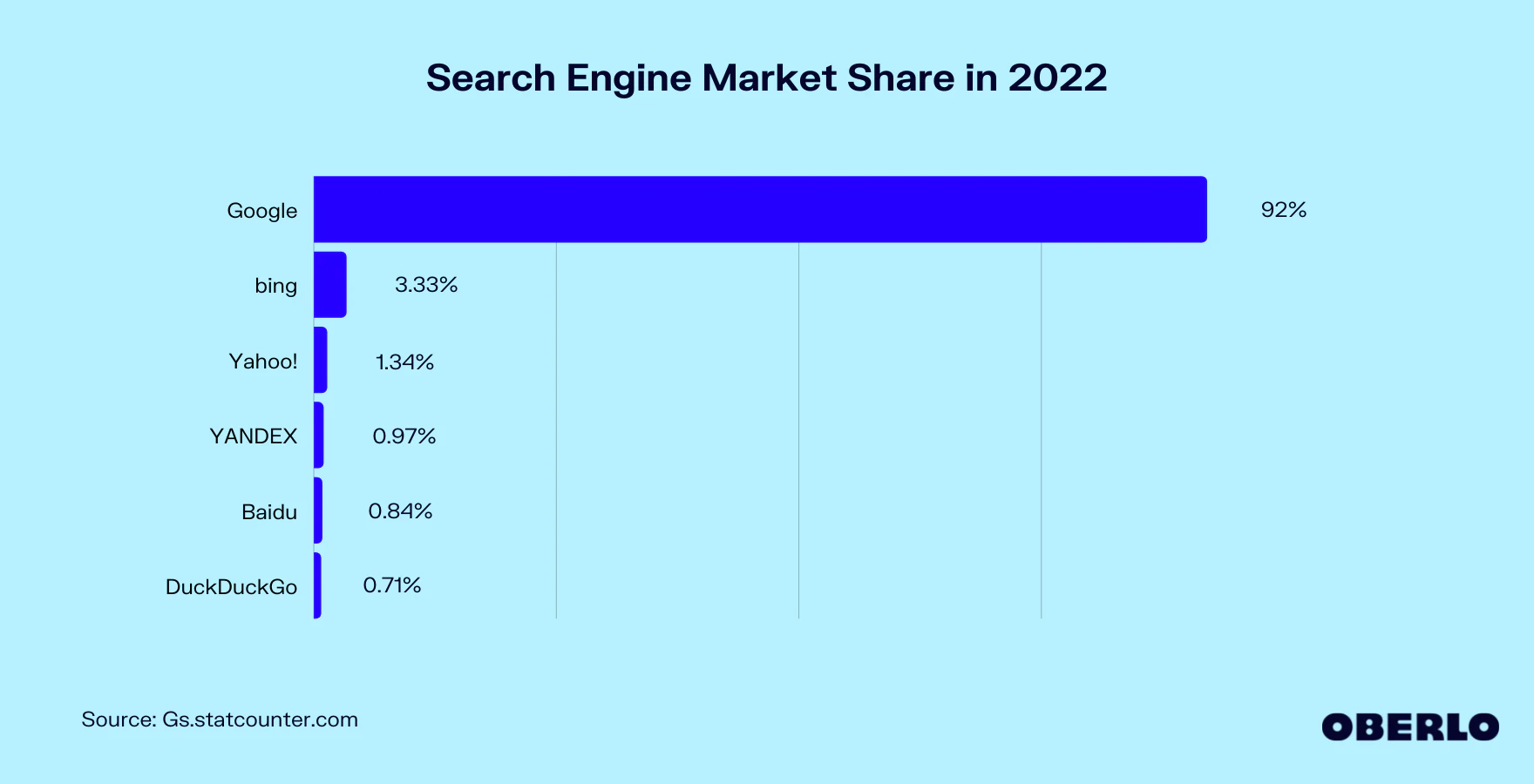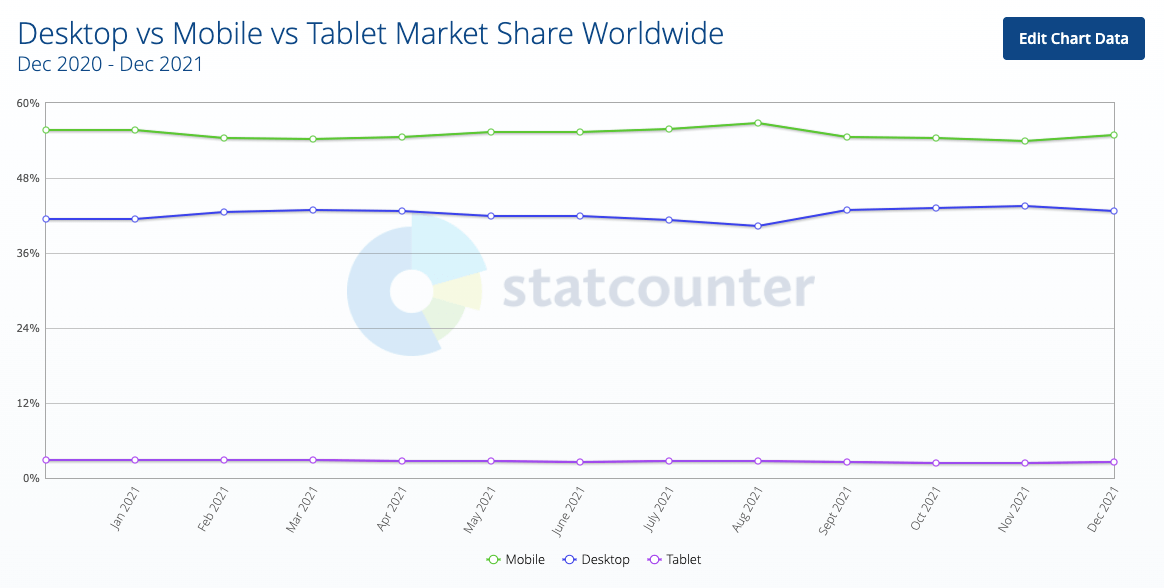7 Most Common SEO Mistakes to Avoid
SEO is key to any digital marketing strategy. Avoiding the common SEO mistakes can give you a competitive edge.
Common SEO Mistakes to Avoid
SEO is one of the key elements of any digital marketing strategy, and for a good reason. It’s indicative that more than a third of online shoppers in the UK start their buying journey on various search engines, and the situation is no different in most of the Western world.
This is becoming increasingly important in the times when more and more businesses are moving online or setting up online shops. In order to beat the competition in the race for top ranking spots, you need to ensure that your website is truly built around visitors’ needs and convenience. This means, above all, user-friendly design, fast page loading speed, and quality content.
However, you’ll need to go deeper than that. In order to provide top-class user experience, you’ll have to get familiar with some advanced SEO tricks that can help you boost your rankings. In this process, there are several mistakes that businesses tend to make very often, and avoiding them can give you a crucial competitive edge. Here are some of the most common ones.
1. Not Knowing Your Audience
You can hire the best marketing agency that will lay out a superb SEO strategy to increase your rankings, but it’ll amount to nothing if you optimize your content for wrong keywords. Good knowledge of your customers’ and prospects’ needs, worries, and interests is an absolute must. It represents a necessary basis for all other SEO activities.
Of course, you’ll obviously have some general idea about who your customers are or what kind of people would be interested in your brand and product. Still, to fully optimize your website, it’s essential to have a data-driven, in-depth understanding of the particular things they search for online, as well as the specific questions they tend to ask.
It’s impossible to achieve this understanding without thorough keyword research. Try finding the keywords related to your industry that draw the most attention but are not yet very well covered by your competition. Or in other words, the best way to get noticed on search engines is optimizing for terms with high search volume and low keyword difficulty. There are numerous tools that can help you in this stage of the process.
2. Neglecting Search Intent
The array of keyword-related mistakes you can make is very wide and it’s not enough to just conduct good research. It’s also about execution. You have to be very careful with the way you use these terms if you wish to get the most out of your keyword strategy.
A lot of businesses make a common mistake of simply overstuffing their content with literal phrases people search for. This tactic sort of used to work in the past, although only to a certain extent. But Google’s algorithm has evolved since then. Now it’s able to easily recognize when you use the keywords only to artificially boost your ranking. And it will probably punish you for this. So use the keywords only moderately, in a natural and spontaneous way, as an integral part of your content.
Now, there’s more to this story. Although it’s effective to use actual popular terms in order to rank for them, it’s even more effective to recognize the context of the search term and/or answer particular questions consumers ask. So don’t just focus on literal phrases, but also think about users’ search intent. Search engine algorithms will only get more capable of recognizing search intent and they’ll definitely favor content that recognizes it as well.
Finally, have in mind – it’s not only about bringing people to the website, it’s also about keeping them engaged. The algorithm finds metrics like time-on-site or bounce rate very important as they indicate whether the users have found what they were looking for on your site. So playing cheap tricks to get people to visit your website won’t work, and even if it does in the short run, the fact that most people tend to leave your website immediately can have devastating long-term effects on your SEO.
3. Forgetting to Update Your Content
Once you’ve created and posted a high-quality piece of content, you shouldn’t just forget about it forever. There are tons of websites with tons of articles containing obsolete information, outdated statistics, and broken links. The truth is, Google doesn’t really like this kind of stuff.
Firstly, broken outbound links are a signal of bad user experience so make sure you download a tool that will help you instantly discover when a page that your article links to disappears, so you can remove it or replace it. When it comes to broken internal links, they make it more difficult for Googlebot to crawl your website and index your pages. So if you change URLs of any of your pages, make sure you edit every page that links to these.
Also, search engines rate the freshness of content and information. This means you should use any chances to update your articles with new data or add paragraphs that will cover current topic-related trends.
4. Building Low-quality Backlinks
Your backlink profile is probably the most important aspect of your SEO. It does make sense – if there’s a large number of links pointing to your website, there’s a good chance you’re providing top-class, helpful content.
But what SEO agencies too often don’t mention to their clients is how vital is the quality of the websites that link to your pages. In a way, you’re “inheriting” authority from them. Linking to low-quality or irrelevant websites can be one of the easiest mistakes to make while building links. Hence the best way to boost your website’s relevance is to get links from those who have already built their authority. As a matter of fact, it’s sometimes better to have no links at all than thousands of spammy ones, as they can suggest you’re doing some suspicious business and this can easily be penalized by the search engines.
Thus you should avoid shady websites where you can buy links, private blog networks, link farms, and similar places offering to boost your backlink profile in a quick and unnatural way. This can only end badly for your rankings. Link building is beneficial, but only if you work with reliable websites that care about their reputation and don’t accept and publish just any sort of content.
5. Lack of Image and Video Optimization
When we talk about search optimization, it’s usually in the context of content optimization and handling on-site technical details. The value of image and video optimization, on the other hand, seems to be somewhat overlooked.
Image SEO is hugely important for several reasons. Firstly, a considerable chunk of searches in Google are image searches, and secondly, Google often includes images as part of regular search results. So missing out on this opportunity to increase the organic traffic of your website would be just silly. Among other things, you should make sure that every image has a relevant, descriptive file name, that you include alt text for every image, and that they don’t take up too much memory.
Let’s look at the last thing on this list a bit more closely. Resizing your images and choosing the right format so they don’t take up too much virtual space can be a life-saver when it comes to UX. It can speed your website up substantially, which is in itself a ranking factor. Furthermore, faster page loading speed dramatically decreases the bounce rates and encourages people to spend more time on the website.
As for videos, the expansion of video content is evident to anyone who… well, to anyone who has internet. Faster connections have allowed people to watch video content wherever they are, wherever they go, and whenever they have just a minute of spare time. Of course, content creators and brands alike have taken advantage of this. Video content can positively affect basically every important metric imaginable for your website or social media.
That’s why you should put some effort into optimizing the videos you post. There are several things you should have in mind here: optimizing the title, writing a description, inserting the subtitles, and using an engaging thumbnail, to name just a few.
6. Failing to Optimize for Mobile
Mobile traffic overtook desktop traffic a few years back, and it seems that the gap between the two will get larger in the years to come. There’s no doubt that users will be browsing, searching, and shopping predominantly from mobile devices in the future. This alone would be a good enough reason to pay utmost attention to the mobile experience you provide.
But there’s more. Search engines have also been paying special attention to mobile versions of websites lately. Google has been exercising mobile-first indexing for years now, and starting from September 2020, mobile-first indexing applies to all sites.
All in all, mobile is definitely the future. You need to make sure that you provide flawless UX to mobile users and spare them any typical inconveniences that they tend to experience. Above all, this means smart, responsive design that will ensure that the website is easily scannable, intuitive, and easy to use, as well as providing decent loading speed on all devices.
7. Thinking You’re (Ever) Done With SEO
Lastly, you’ll have to accept that you’ll never really finish optimizing your website. Google will keep introducing new updates again and again in an attempt to make search results more relevant, so website owners will have to adapt accordingly, making little changes and using new tricks that’ll boost their rankings.
Moreover, your strategy will depend on how your competitors change their own strategies. So you’ll have to keep an eye not only on algorithm updates but on your rivals as well. Your content will have to stay fresh, your website quick, your UX sharp, and all this is surely a never-ending business. And if you fail to deliver, you’ll be going down, literally and figuratively.
Really Simple Systems is now Spotler CRM
The same great technology, a CRM platform that is focused on the needs of B2B marketers, provided by the same great team, at a great price!




